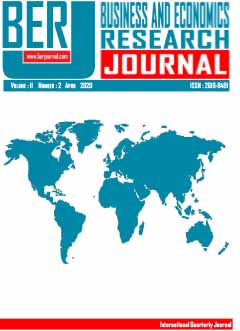GARCH Ailesi Modelleri ve ANN Entegrasyonu ile BİST 100 Endeks Getirisinin Volatilite Tahmini
Estimation of the XU100 Index Return Volatility with the Integration of GARCH Family Models and ANN
Author(s): Fela Ozbey, Semin PaksoySubject(s): Economy
Published by: Adem Anbar
Keywords: Volatility; Autoregressive Conditional Heteroskedasticity Models; Artificial Neural Networks; Hybrid Models; Semi-Parametric Methods; XU100 Index;
Summary/Abstract: To avoid market risk, besides portfolio diversification, investors are trying to model the volatility in the best way to reduce uncertainty. The most commonly used methods to model volatility are Autoregressive Conditional Heteroscedasticity family models. However, some studies published in recent years show that semi-parametric hybrid models which consist of the integration of Autoregressive Conditional Heteroscedasticity family models with the Artificial Neural Networks algorithm perform better than these simple models. In this study, the volatility of the Borsa İstanbul 100 price index return is estimated by the aforementioned simple and hybrid models, and the success of the hybrid models is compared with the success of their components. Two different distributions - Normal Distribution and Generalized Error Distribution - are assumed through the estimation process. Comparisons are performed using Mean Squared Error and Mean Absolute Deviation criteria. According to both criteria, the hybrid model composed of Exponential Generalized Autoregressive Conditional Heteroscedasticity - Artificial Neural Networks performed the best. In line with these findings, it is recommended to evaluate the advantages of hybrid models in dynamic risk analysis of financial instruments.
Journal: Business and Economics Research Journal
- Issue Year: 11/2020
- Issue No: 2
- Page Range: 385-396
- Page Count: 12
- Language: Turkish

